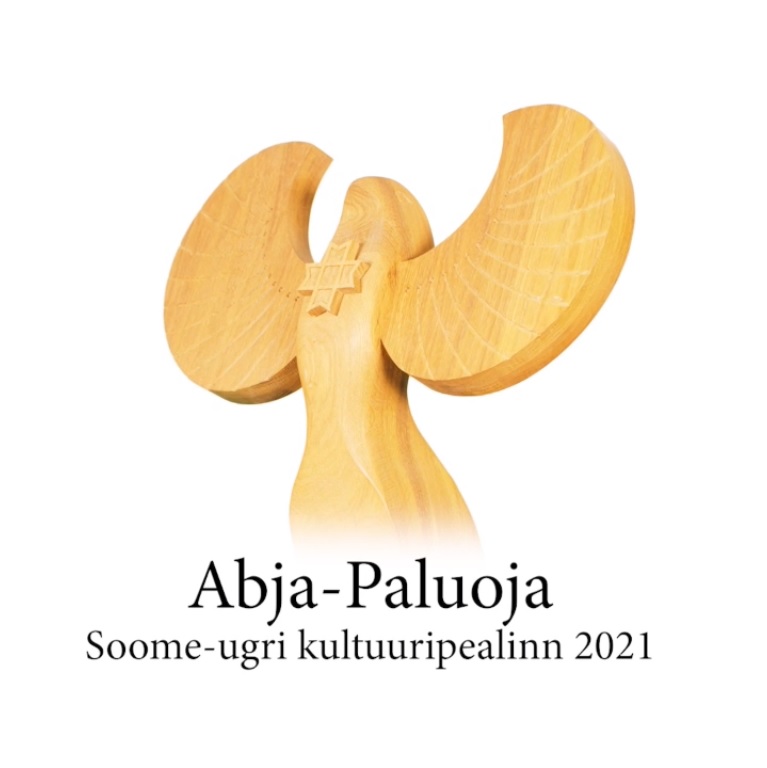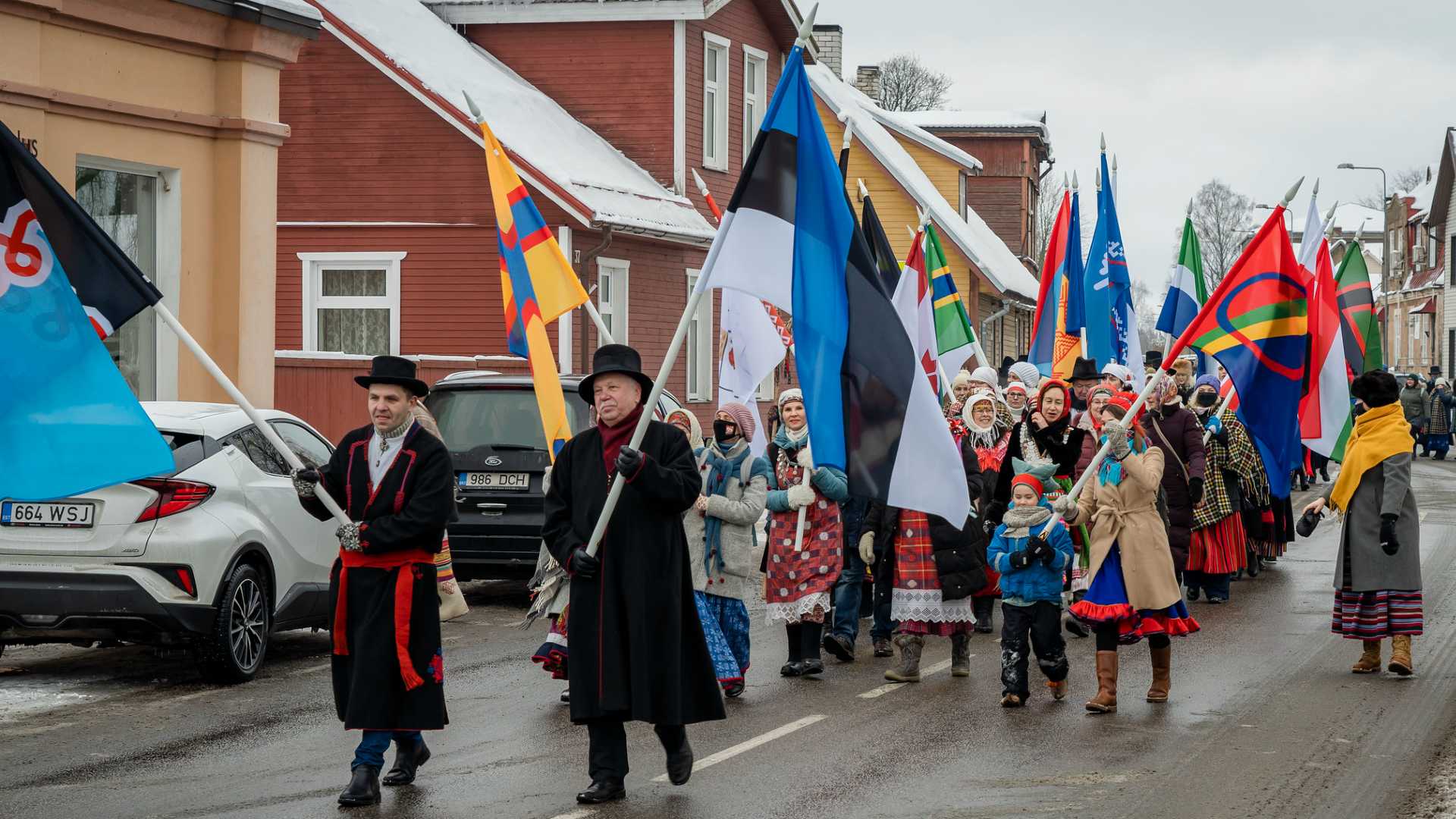On Saturday February 13th, 2021 Abja-Paluoja, a town in the historic Estonian region of Mulgimaa, was awarded the title of Finno-Ugric Capital of Culture for that year. Though these cultural identities may at times be spoken of as though they are gone, the day's gathering and parade of colourful and finely-crafted folk costumes down the town's streets display these cultures' vitality.
It was a frozen afternoon to meet outside, but the crowds were kept warm by their wool garments (such as the traditional long black cloaks and felt hats worn by men from Mulgimaa), squeezebox music floating through the air, the singing of the crowd, and the two MCs' cheery introductions. With cameras at the front edifice of Abja Paluoja's Culture House, those from around the Finno-Ugric world, and beyond, celebrated heritage together.
Within Estonia, Mulgimaa is well-known for its abundant and independent spirit. After locals became free from serfdom in 1819, they bought farmland to grow flax and became some of the wealthiest people in Estonia. This affluence gave energy to the local folk culture. From one end of the Finno-Ugric world to another, however, what happens in a town with a population of 1,124 could blow by without being noticed if it weren't for communities putting effort into connecting with each other.
There were a few visual motifs found throughout the event, such as in the aforementioned folk costumes. Loops of red accentuated the cloaks, with the same details seen on the Mulgi flag of blue, white, red, and black. But the most prominent visual element was the symbolic wooden sculpture of a bird with its wings spread wide. This bird, referred to as the Tsirk, leads back to an ancient tale of the birth of the world. According to Finno-Ugric Capital of Culture 2021, it goes like this: “a bird lays three eggs and starts to lay out the nestlings – one becomes [the] Sun, one becomes [the] Moon and one becomes the Earth.” The sculpture, made by artist Pavel Varunin, has 26 feathers that represent Finno-Ugric nations. The image of a bird is empowering. It sees from high above, from the Baltic Sea to the slopes of the Ural Mountains. It sees the past and future of Finno-Ugric peoples.

Part of the ceremony was to bring the Tsirk and place it in the heart of town, a bookstore, for all to see. The sculpture was brought a long way from 2020's capital, the town of Mishkino in the Republic of Bashkortostan, Russia. While Bashkortostan is primarily Bashkir and Tatar-speaking, 60% of Mishkino's residents are of the Mari people. Each year, a new town is chosen by a jury with representation from across Finno-Ugric cultures.
The title of “Capital of Culture” benefits awarded towns by instigating even more events centred around that region's own culture. The title circulates global visibility of regional knowledge. For example, Nadezhda Gainetdinova, a delegate from Mishkino, described how “The flagship event of the Finno-Ugric Capital of Culture 2020 year will be a bear festival in the autumn – given that the village name both in Mari and Russian refers to the bear, and due to the significance of [bears] in the mythology and identity of many Finno-Ugric peoples.” Organizational cooperation expands the knowledge of these ideas and reinforces that these cultures are living, not extinct.
These values were reflected by dignitaries attending the ceremony, including President of Estonia Kersti Kaljulaid, the Minister of Culture Anneli Ott, a representative from Mishkino, and Former President Toomas Hendrik Ilves. Based on an ERR report, President Kaljulaid voiced her desire for the title's benefits to extend to language. “I would so like to see that we would have not only textbooks for the Võru and Setu dialects, but for all other Estonian dialects as well…”
The original organizer of the Finno-Ugric Capitals of Culture, in 2013, was the Youth Association of Finno-Ugric Peoples. Now, they work along with the URALIC Centre for Indigenous Peoples, formed by Oliver Loode in 2017. With the latter organization, there is a foundation of cultural activism. The organization's mission is “to protect and promote rights and sustainable development of indigenous peoples in accordance with international law and norms, and specifically the UN Declaration on the Rights of Indigenous Peoples (UNDRIP).”
These titles benefit the breadth of Finno-Ugric people because they can work together to continue passing their cultural knowledge on to future generations.
This article was written by Vincent Teetsov as part of the Local Journalism Initiative.



